Auctions
The Art of F.P. Journe — Christie’s Geneva Watch Auction May 12, 2023
How does this auction beautifully illustrate the story of Journe’s journey as a watchmaker? I’ll put it like this. The world has been waiting for two centuries for another watchmaking giant to walk the earth, an individual that would continue the story of the legends of the 18th century, like Breguet, Berthoud, Janvier, Harrison and Lépine; a man that would reconnect the values of the golden age and its ceaseless pursuit of advancing timekeeping accuracy with the modern era. And through doing so, he would define an all-new horological language that could be considered the most significant independent voice of our time, making the once almost lost art of mechanical timekeeping more relevant than ever. That man is François-Paul Journe.
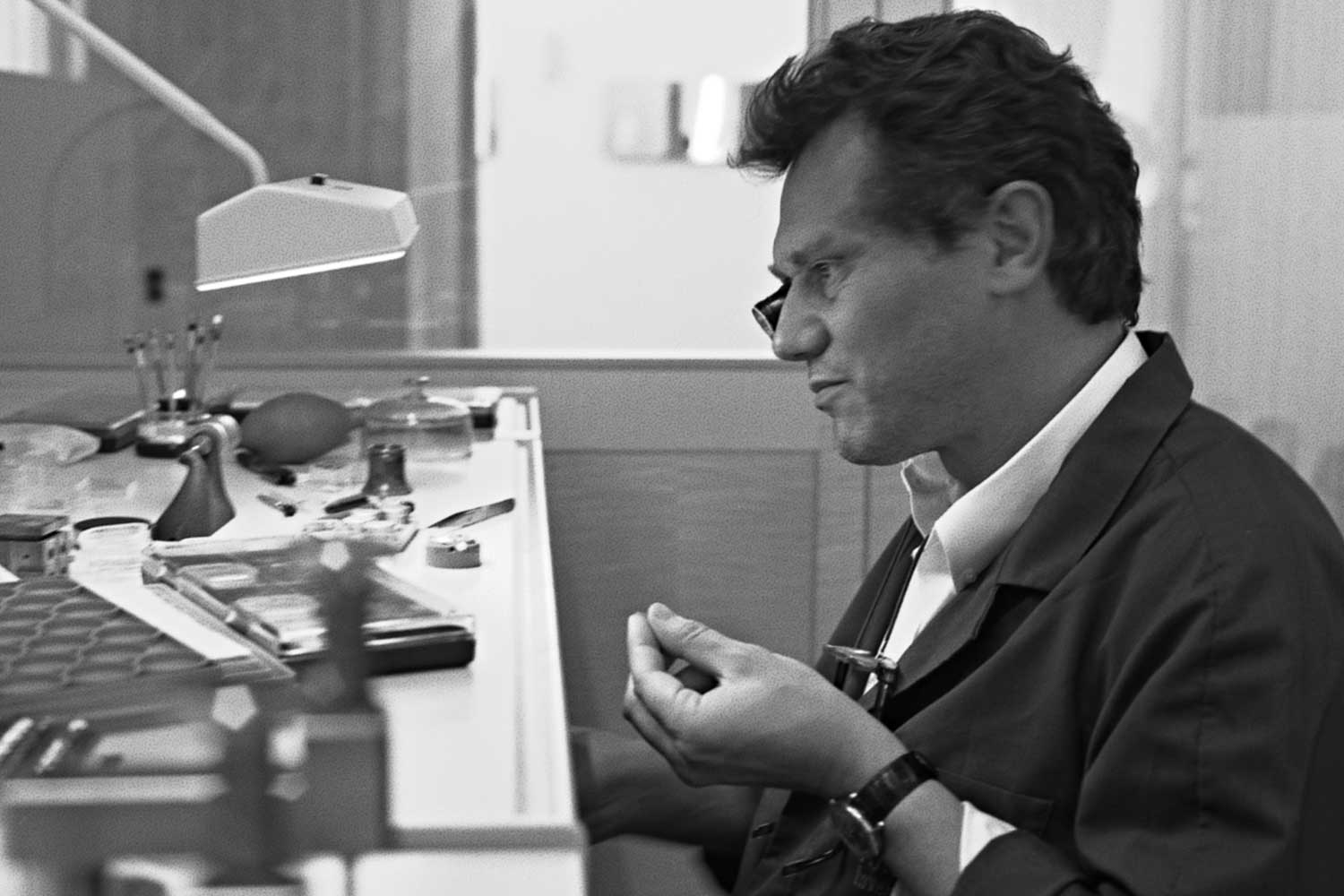
François-Paul Journe

A 20-year-old Journe at the Parisian workshop of his uncle Michel, where he was exposed to the works of the great watchmakers of the 18th century
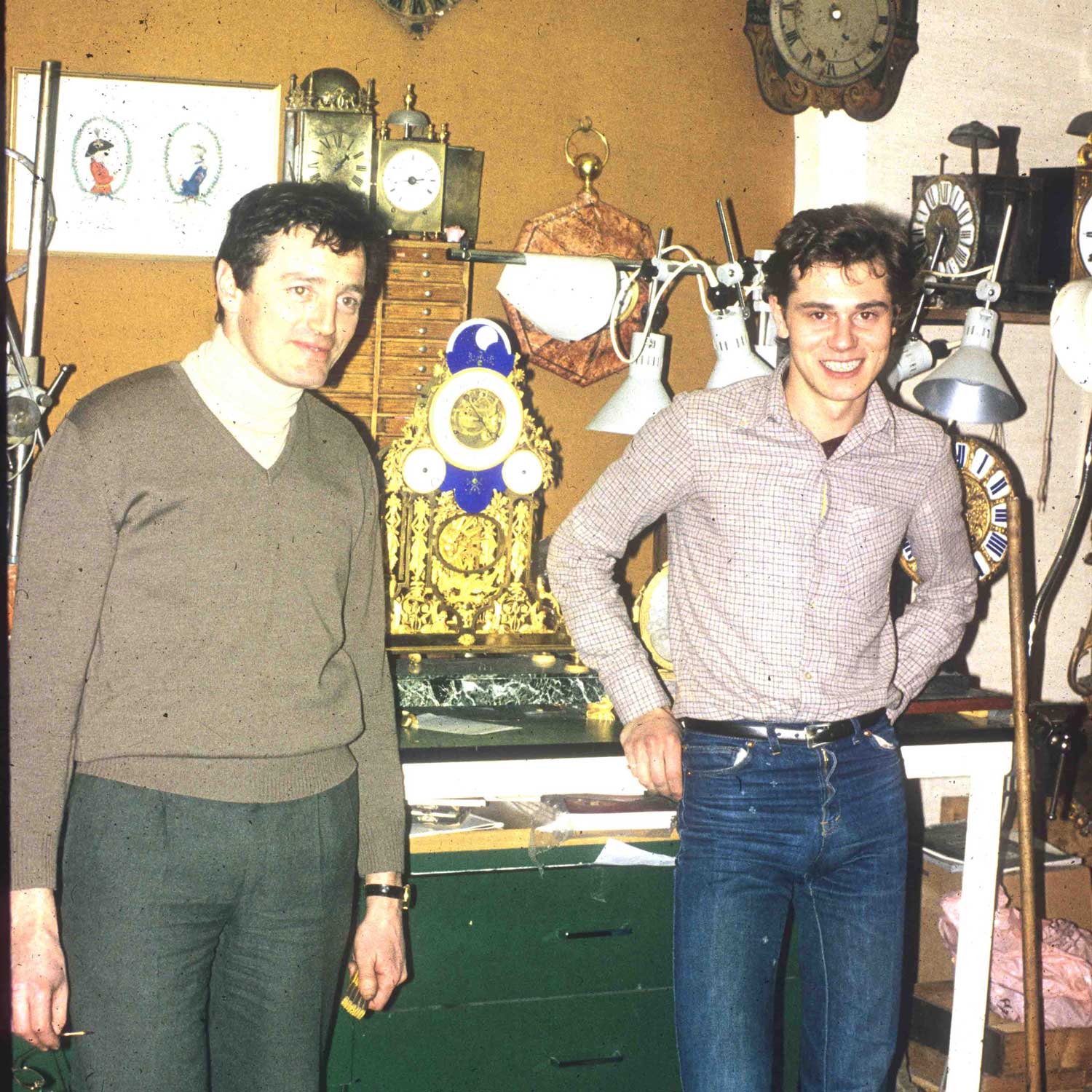
François-Paul Journe stood beside his uncle Michel in his workshop in 1979, where they worked together on restoring antique clocks
Unrivaled Contribution to Horology: Auction Lots of the Greatest Significance
Journe’s palmary achievements are the stuff of legend: the first wristwatch tourbillon with remontoir d’egalité; the first wristwatch tourbillon with a dead seconds mechanism driven by a constant force device; the first wristwatch successfully implementing the phenomenon of resonance; an extraordinary chronometric automatic caliber able to integrate a vast variety of complications, including a chronograph in a mere one millimeter height of spare space; the world’s first grande et petite sonnerie incorporating safety systems making it immune to bad owners and using an all-new pair of flat gongs mounted beneath the dial; the world’s thinnest minute repeater wristwatch (at the time) using the same pair banana shaped gong; a chronograph with a 1/100th of a second hand capable of decoupling from the pinion driving it the moment the chronograph brake is activated; a chronometer featuring a constant force mechanism and the EBHP escapement inspired by Breguet’s natural escapement; the Astronomic, a watch displaying sidereal hours and minutes next to civil time, indicating sunrise and sunset, equation of time and driven by an annual calendar and a hidden tourbillon.
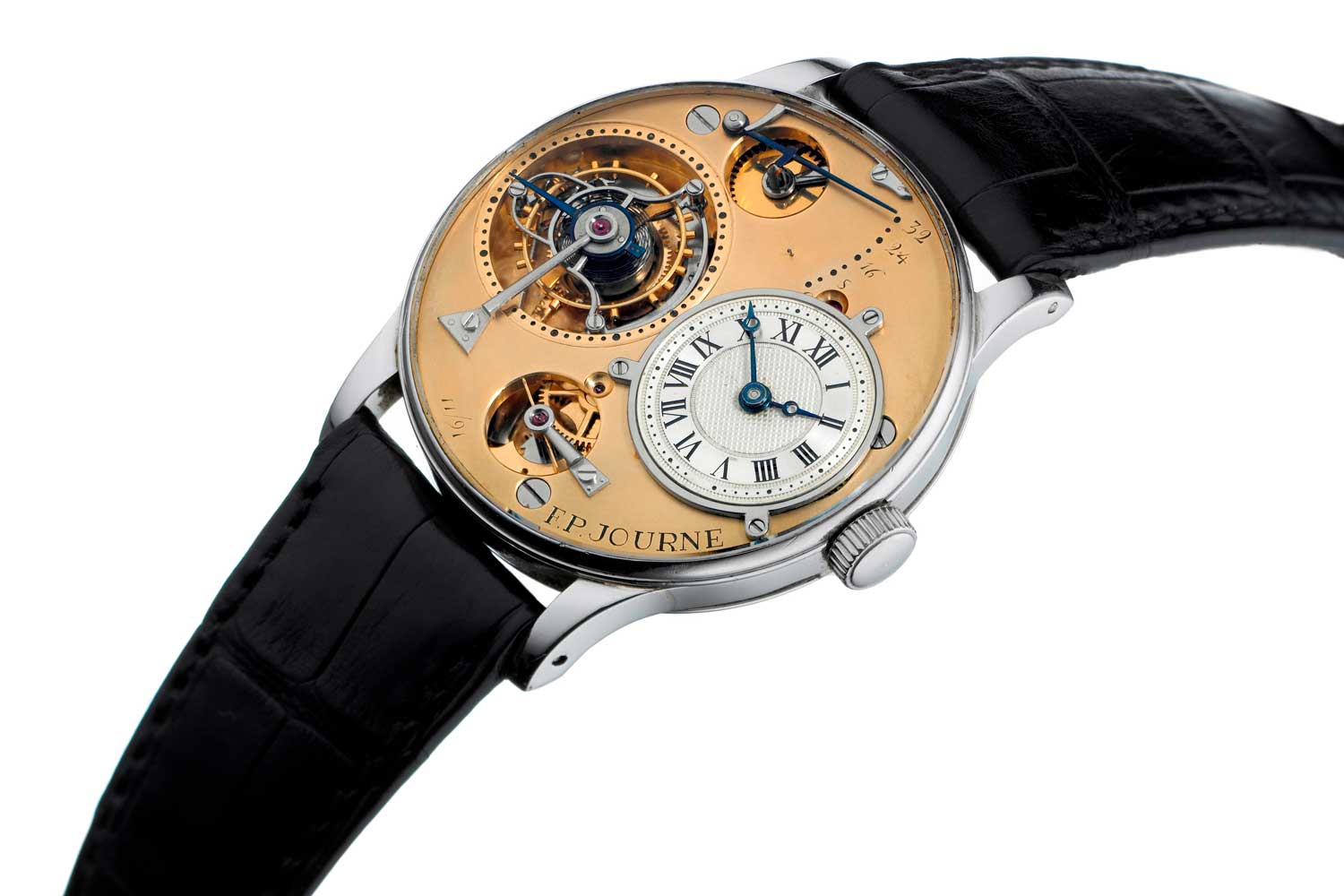
The very first Tourbillon Souverain prototype numbered 11/91 (1991) which still remains in Journe’s personal collection today
Amongst the many extraordinary timepieces offered for sale at The Art of F.P. Journe, there are certain watches that can rightly be considered true horological treasures. Here are three of my favorite lots from the auction.
Lot 39 (2039): F.P. Journe Tourbillon Souverain “Souscription,” No. 2/20, Circa 1999
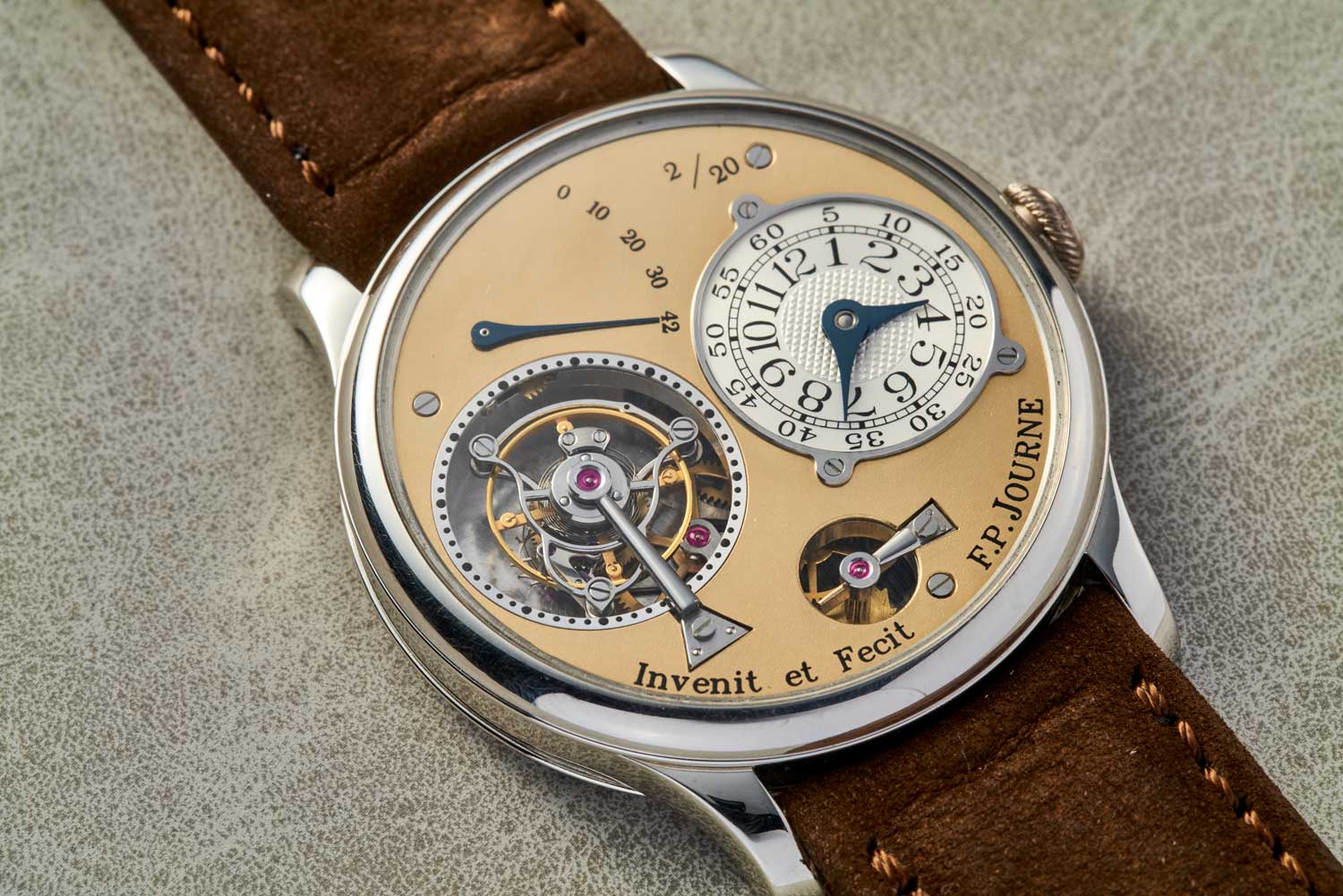
Lot 2039 is a Tourbillon Souverain “Souscription,” No. 2/20, otherwise known as the first series with this example being the second Tourbillon Souverain produced. The Souscription series represents the only Tourbillon Souverain watches that were numbered both on their dials and the case back. The dial has been hand-finished and is further distinguished by having a rounded, black polished remontoir cock which would later be replaced by a flat one in the third series.
What is the significance of this? It finally enabled the tourbillon to have a raison d’être in a wristwatch. The tourbillon mechanism, which adds an entire cage assembly to the oscillator, is incredibly heavy. As such, when power reserve diminishes, the weight of the cage actually accentuates the reduction in torque, creating subpar accuracy, which is anathema to a device created to enhance chronometric performance. As Journe describes it, “Putting a tourbillon in a wristwatch is like placing a backpack of rocks on a boy’s back before climbing the stairs.” But by using a remontoir d’egalité, Journe brilliantly removed the torque powering the tourbillon from the direct influence of the mainspring. Instead, it is rearmed by its own power source once every second. The remontoir, which would become synonymous with Journe and his work, is an incredible device. In fact, it allowed John Harrison to create his fabled H4, the world’s first marine chronometer, a watch so accurate it could enable sailors to tell their longitude at sea.
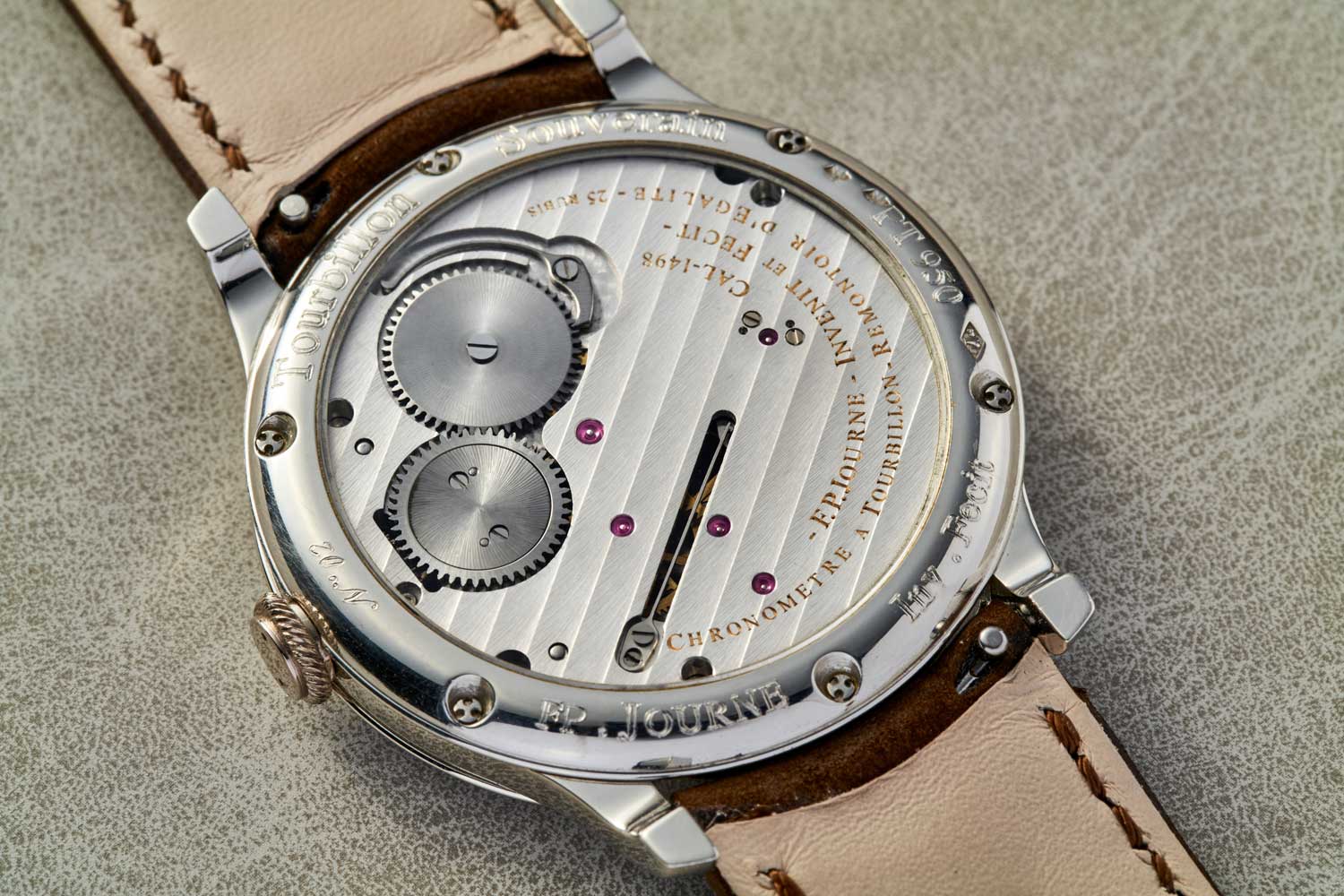
The engravings on the case back are applied by hand on the present Souscription watch as opposed to the deeper engravings applied by laser on later examples
To learn more about this story, please watch my interview with François-Paul Journe here.

François-Paul Journe honouring his mentor George Daniels with a special Chronomètre Souverain during an intimate dinner organized by John and William Asprey in 2010
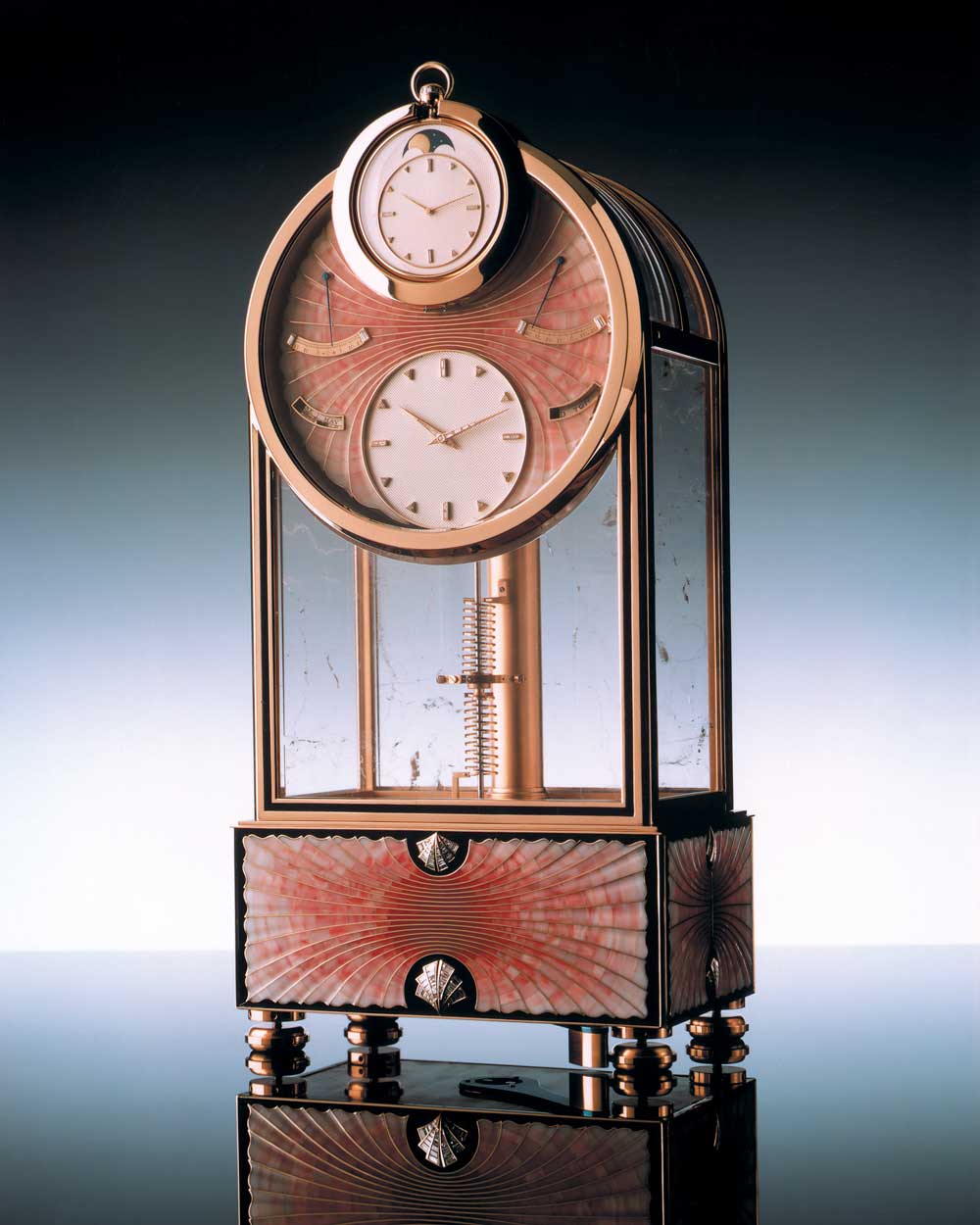
The Pendule Sympathique made by Journe for Asprey. It is crafted in rock crystal and pink coral with a minute repeating pocket watch inserted into its recess at the top
A few years later, Journe would be at lunch with his friend Camille Berthet. He had plenty of work for other brands, but he still dreamed of launching his own. He explained that he lacked the initial capital to fund the creation of an atelier, and she came up with the solution in a flash of inspiration. She suggested that he followed his hero Abraham-Louis Breguet’s Souscription model where he would ask clients to pay upfront for a watch in exchange for a more attractive price. While asking 27,500 Swiss francs for his first 20 tourbillons would mean he would not make money on these watches, the amount he raised in advance would allow him to establish his brand. Immediately, Journe reached out to friends and collectors. A fifty percent deposit was paid for each watch in 1998, with the watches due to be delivered in 1999. These first 20 watches were responsible for the creation of the F.P. Journe brand.
The Tourbillon Souverain “Souscription” No. 2/20, like the other 19 Souscription watches, forged the geometric blueprint of Journe’s design philosophy. Says Remi Guillemin of Christie’s, “What is fascinating about François-Paul is that he always starts with the design of his dial first, and then creates the movement to fit the aesthetic. The Tourbillon Souverain is a masterpiece of symmetry, a code established here that we would see echo throughout so many of his other watches, such as the Chronomètre à Résonance. The dial and tourbillon each occupy a full half of the dial.”
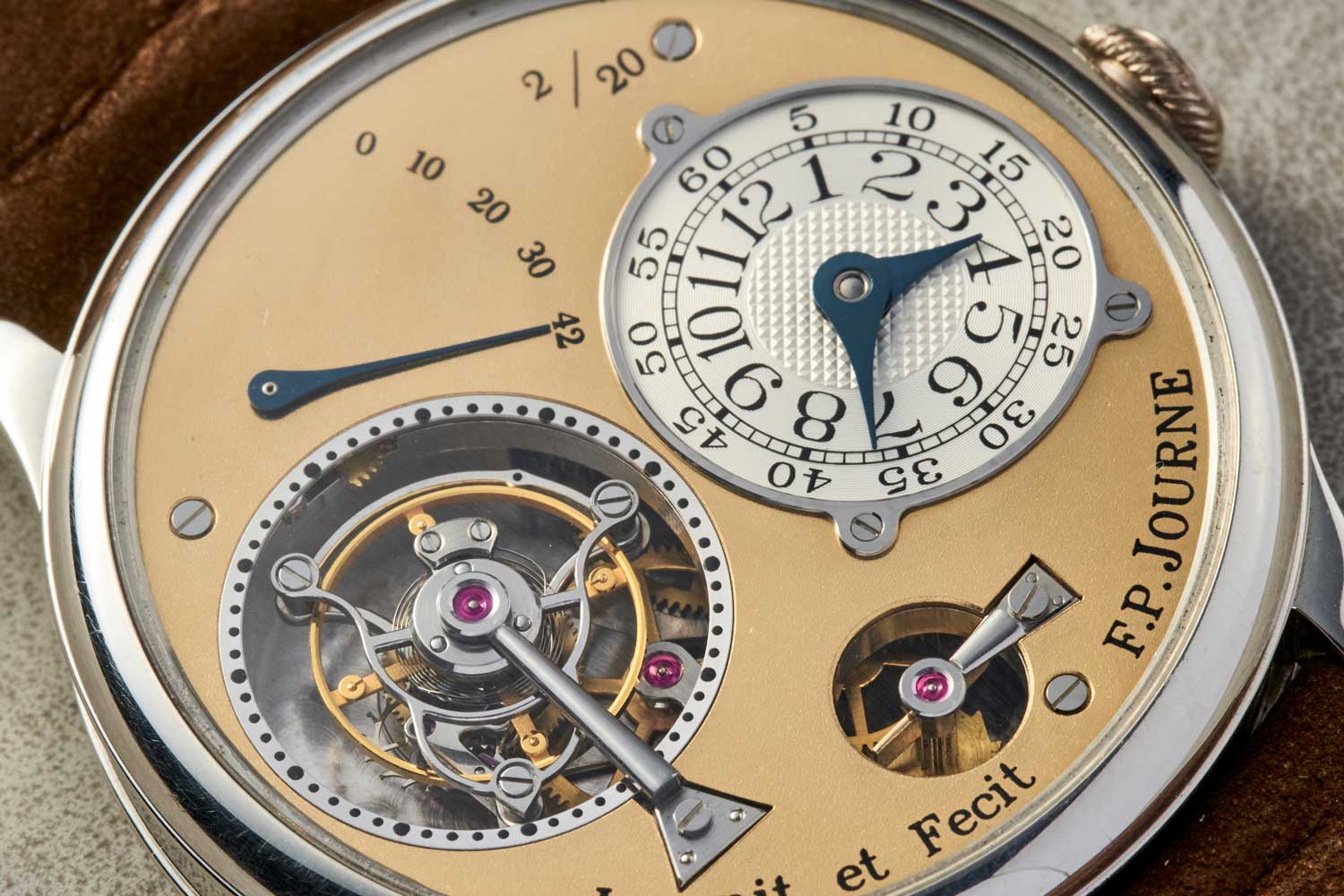
At nine o’clock on the dial is a one-minute tourbillon which is distinguishable from later generations by the larger second markers surrounding the aperture and a small hole on the edge of the cage
Says Guillemin, “These 20 Souscription tourbillons are to me amongst some of the most historically significant timepieces of all time, in that they truly represent the birth of Journe as an independent watchmaker. In addition, it appears that these first 20 watches are largely crafted by his hand with wonderful handmade details.”
George Mayer is director of sales and watch buying at WatchBox, the company that has played a significant role in educating the world about F.P. Journe. He says, “These watches are similar to the first-generation Tourbillon Souverains made from 1999 to 2003. But at the same time, they are totally different in that they are all essentially handmade by the master. Buying this watch, No. 2/20, is like buying one of the first Stradivarius violins fully made by Antonio Stradivari himself.” As with the first series of Tourbillon Souverains that followed it, this extraordinary timepiece features a brass, rhodium treated movement.
Lot 38 (2038): F.P. Journe Chronomètre à Résonance, “Pre-Souscription,” Circa 2000
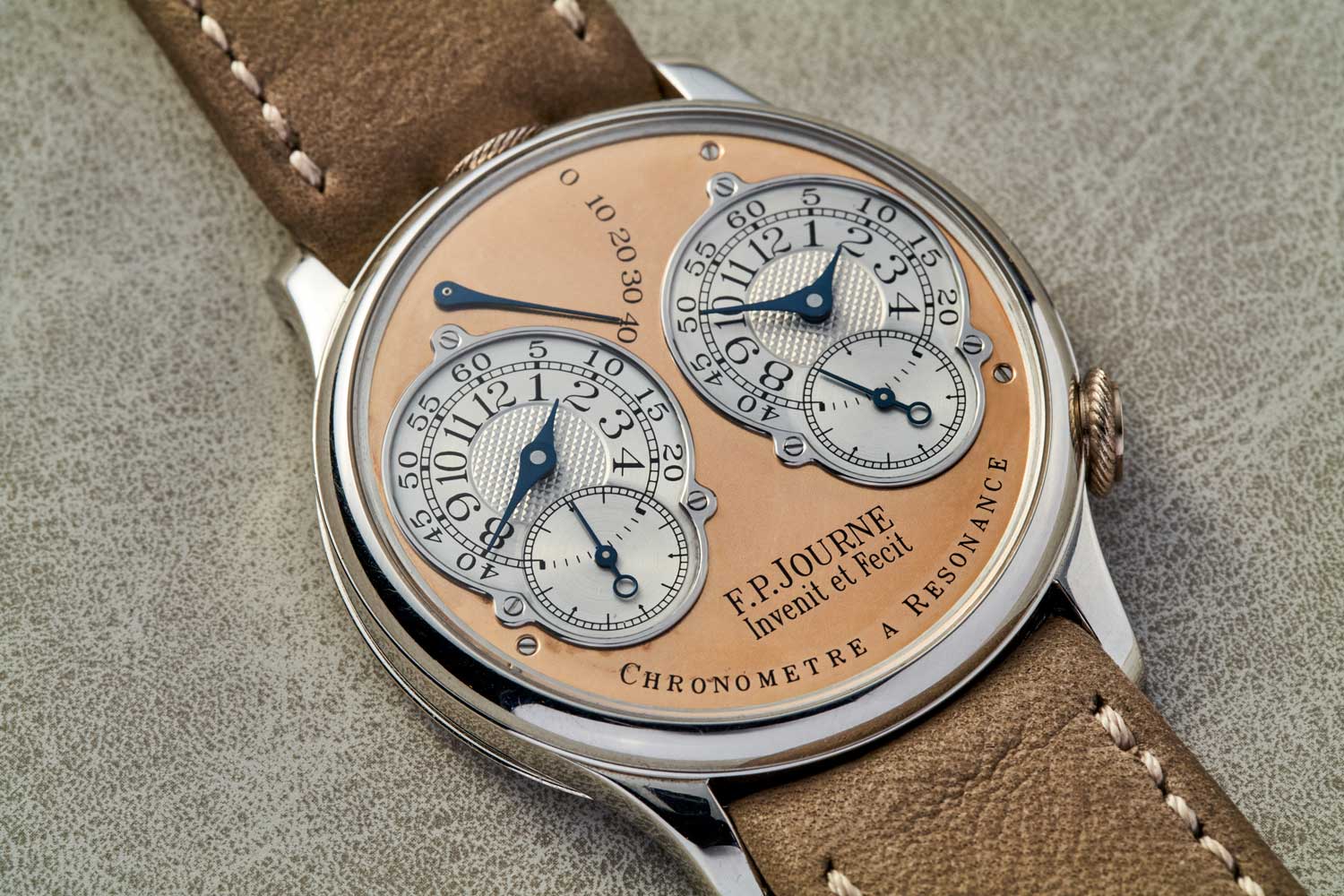
While the souscription series were numbered 1 to 20, they do not represent the first Chronomètre à Résonance watches made as Journe had set aside these initial numbers for future orders. There were in fact some pieces made prior to the souscription watches colloquially referred to by collectors as “pre-souscription” such as the present example, Lot 2038
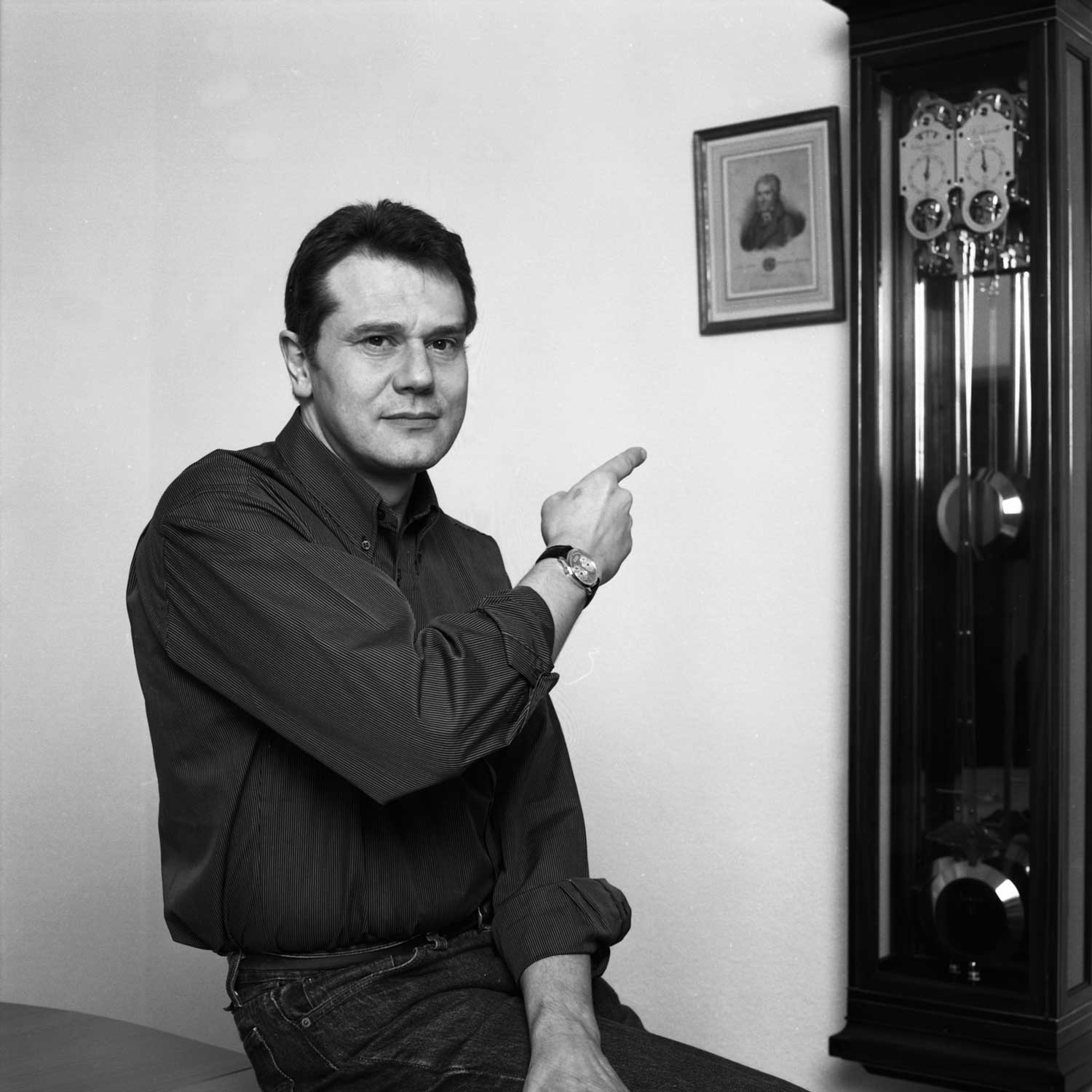
Journe, in his younger years, gestured towards a resonance double pendulum wall regulator made by Antide Janvier.
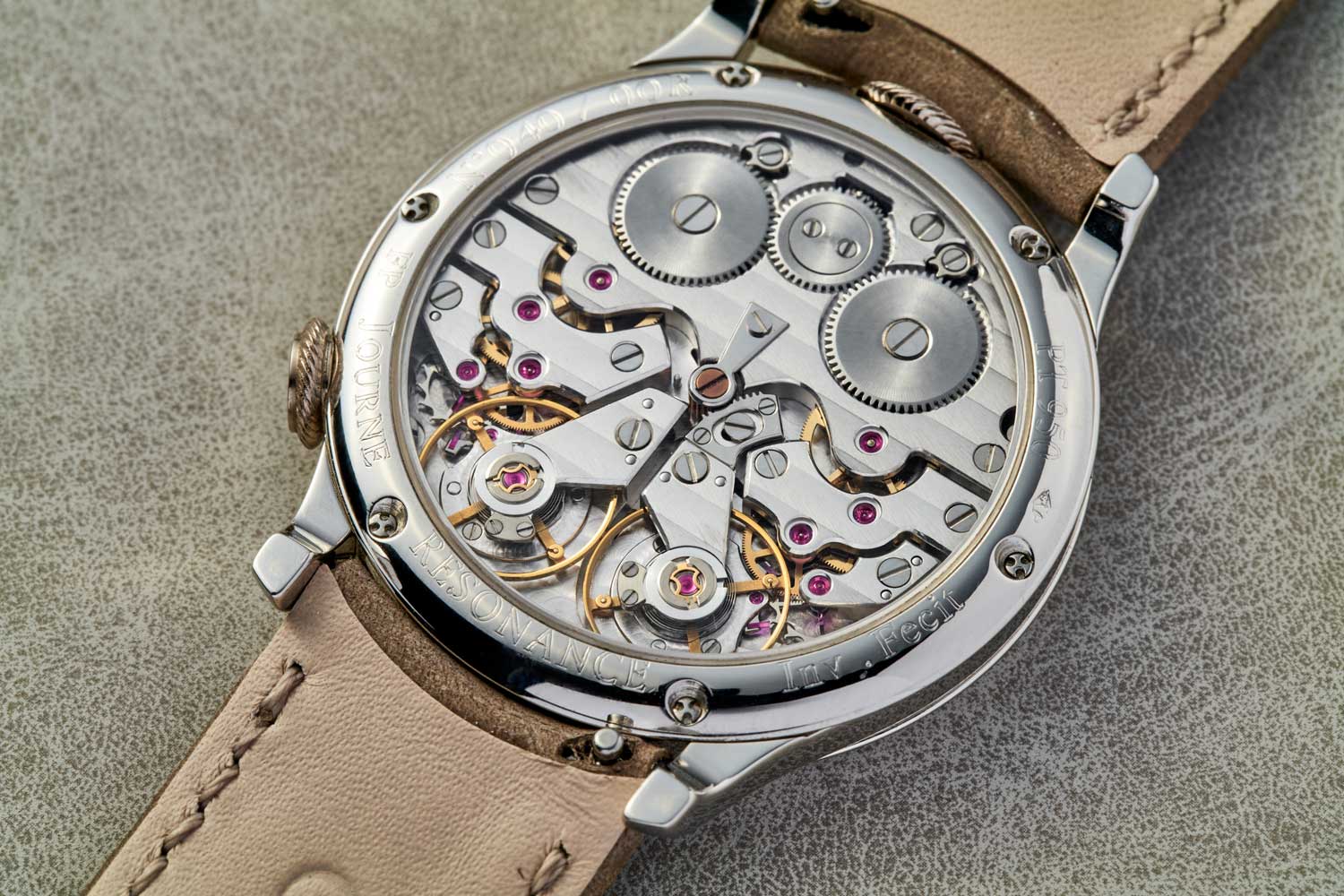
The case back bears the serial number 040/00R, with the suffix 00R indicating that it was produced in 2000 and its serial number 40 would make it only the 20th Chronomètre à Résonance watch made. The inscriptions on the case back are noticeably shallower as they were engraved by hand, as opposed to the deeper engravings applied by laser found on the Souscription series
What is extraordinary about the present timepiece, Lot 38 (2038) of The Art of F.P. Journe auction, is that it is a “Pre-Souscription” model. While Journe officially launched the Chronomètre à Résonance in 2000 with the souscription series, it does not represent the first pieces produced even though they were numbered 1 to 20 as Journe had set aside these initial numbers for future orders. There were indeed a number of watches created prior to the souscription series and are colloquially referred to by collectors as “pre-production” and “pre-souscription”. The “pre-production” watches are suffixed 99R, as their cases were ordered in 1999 prior to watch’s presentation in 2000 and are numbered in the 20’s while the “pre-souscription” bears the suffix 00R with a serial number that continues from where the pre-production pieces left off.
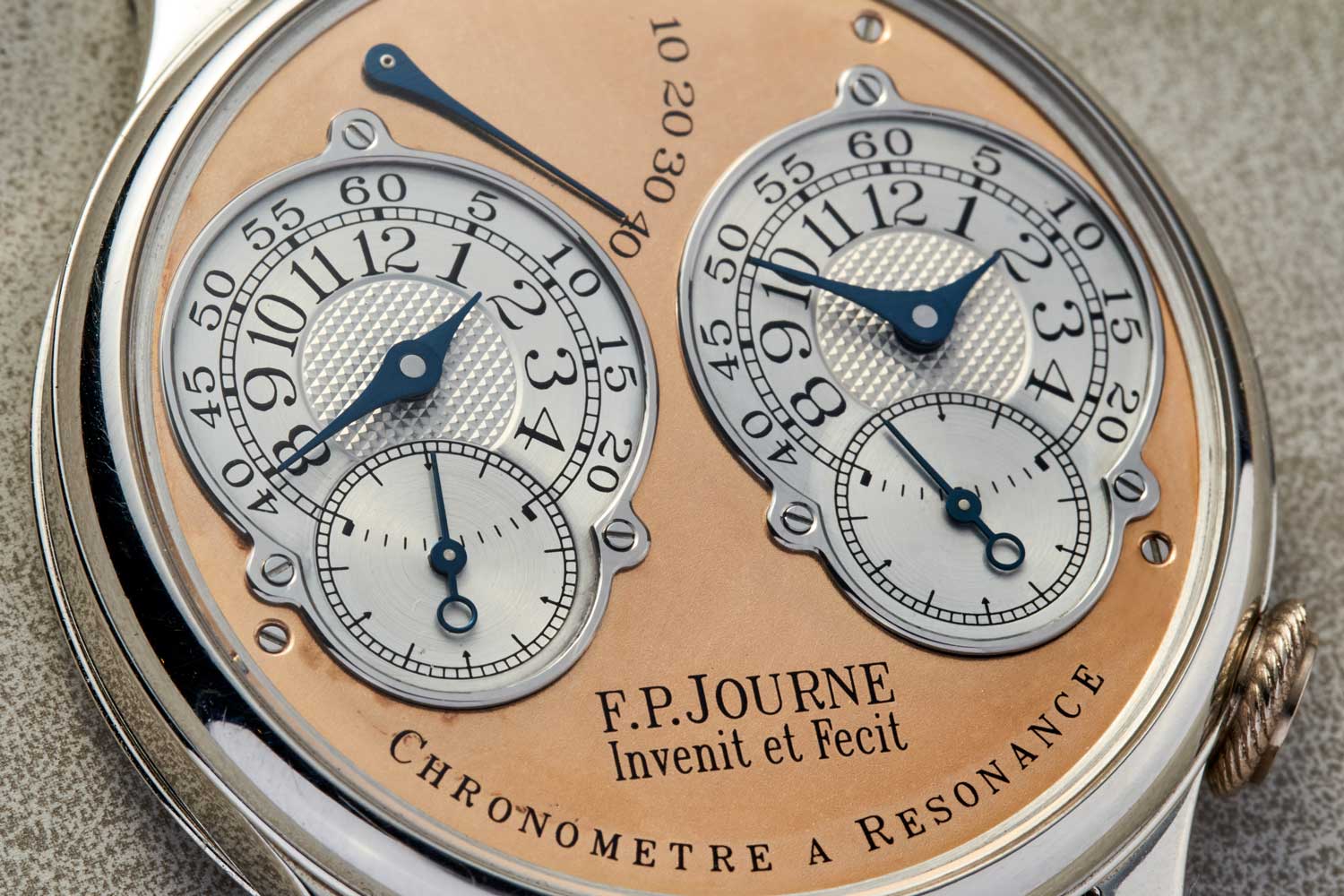
This early piece features a variety of hand-made details that give it a sense of craftsmanship and character
This example bears the case number 040/00R, with the suffix 00R indicating that it was produced in 2000 and its serial number 40 would make it the 20th Chronomètre à Résonance watch made.
Lot 8 (2008): F.P. Journe Triptyque Vagabondage, No. 47/69, Circa 2006, 2010 and 2017
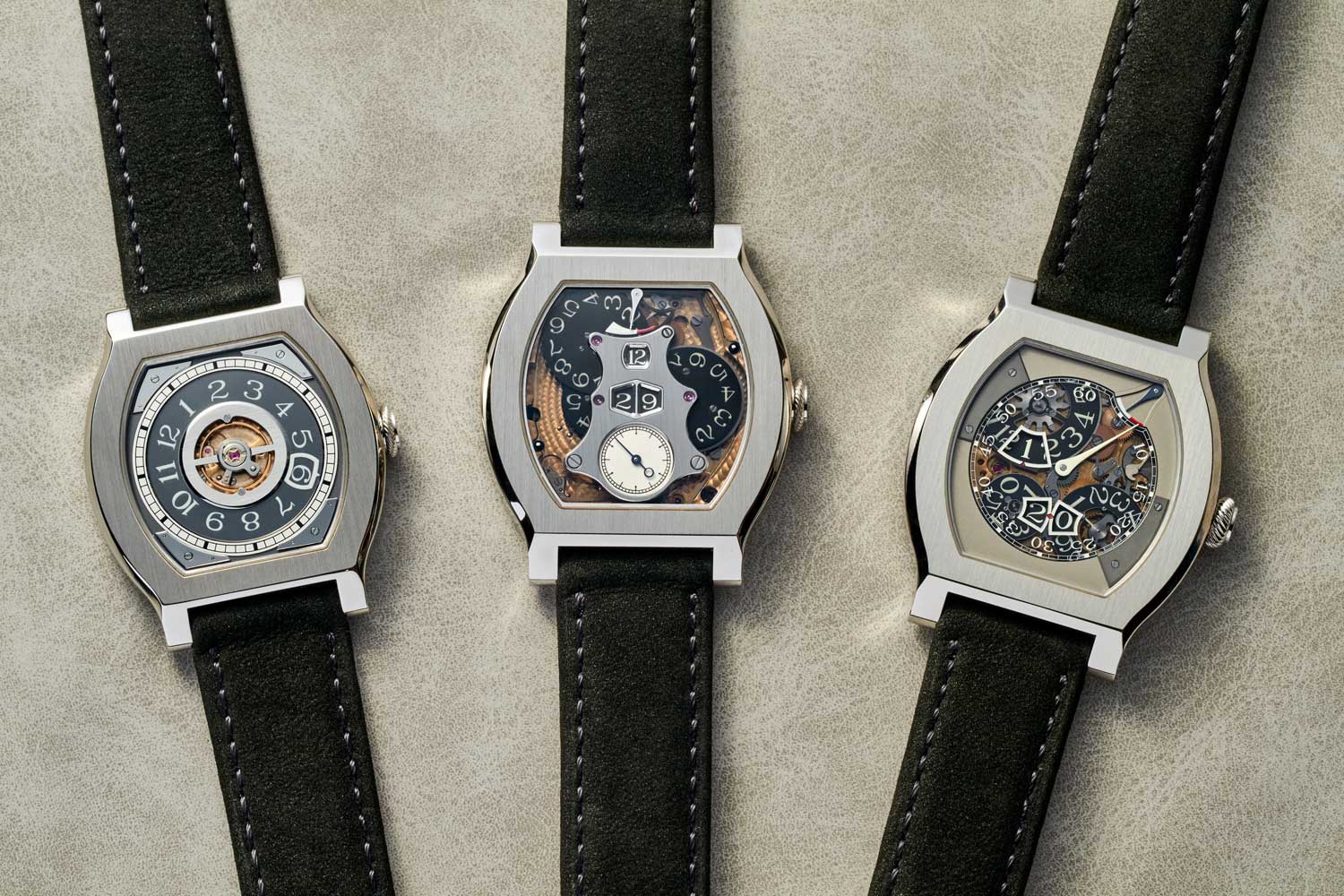
F.P. Journe Triptyque Vagabondage, three superb examples that were assembled as a set, each with a matching serial number 47/69
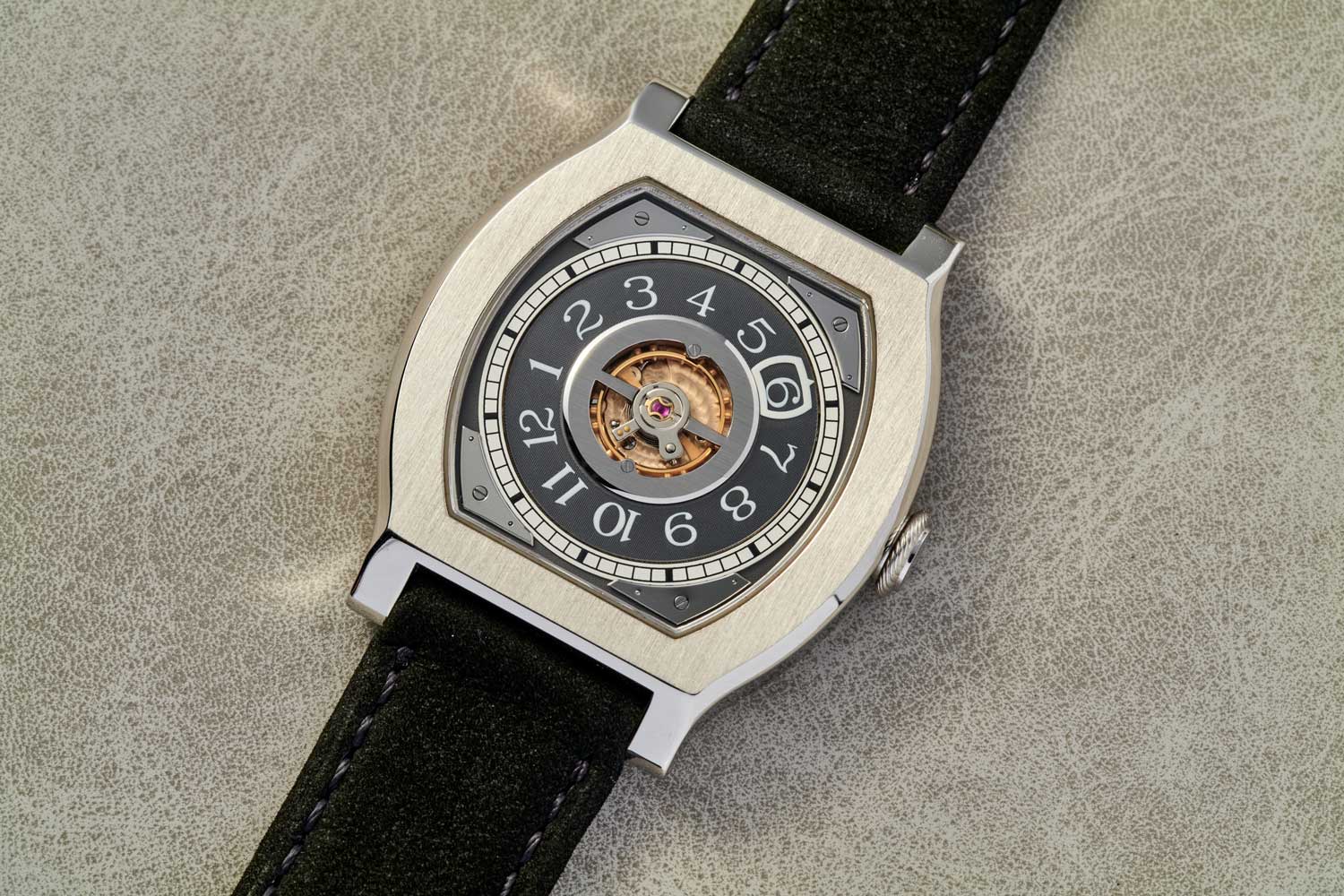
The first of the tortue-shaped, jumping-hour Vagabondage series, the Vagabondage I with a central balance wheel features an hour disk with an hour numeral encircled by a white aperture, printed on a transparent disk above. Both disks rotate in synch but at the turn of the hour, the aperture disk jumps to encircle the next hour.
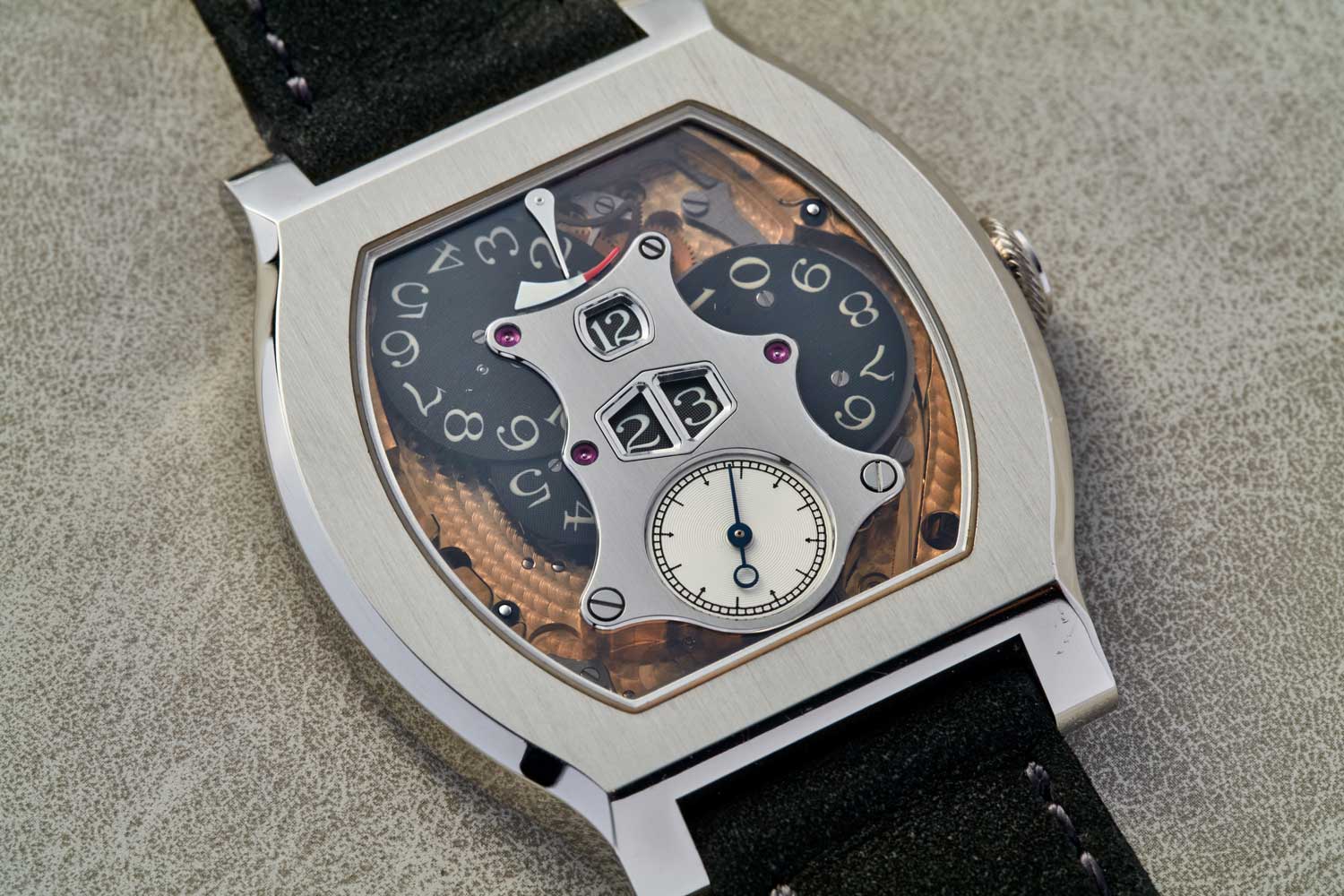
The Vagabondage II was one of the only watches to incorporate not just a jumping hours indication, but also jumping minutes. It has a vertically aligned time display, with the power reserve indicator positioned at the top, followed by the digital hours, the minutes displayed in two apertures, and a small seconds sub dial at the bottom. To ration out energy in the mainspring to power the jump, Journe incorporated a remontoire d’egalité.
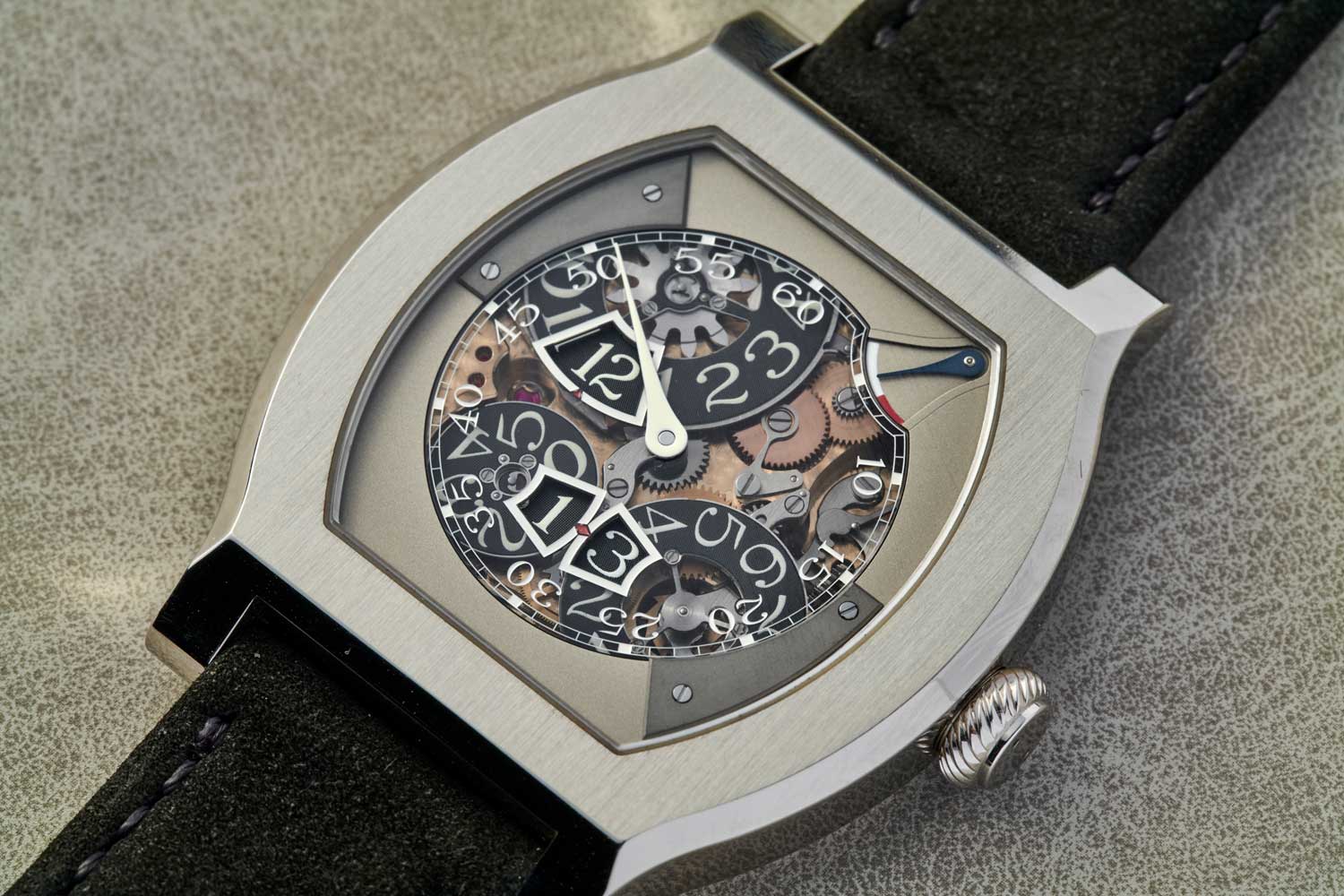
Even after six years since its introduction, the Vagabondage III remains the only watch on the market with a digital jumping seconds. The jumping seconds is driven by a gear train separate from the jumping hours and sweeping minutes. Along this gear train is a one-second remontoir that stores and releases a consistent amount of energy every second to power the jump.
Watches, the Ultimate Collectible Assets
This auction comes at a time of immense significance to me. At a moment when collector culture is at a crossroads and perhaps suffering a kind of cognitive existential crisis, I’ve seen the rise and fall of digital art forms like NFTs. While I am not a cynic by nature, the crypto crash, the implosion of crypto exchanges like FTX, the rise and fall of NFTS such as those offered by Bored Ape Yacht Club, and the tangled web of hype that surrounded them before their values came crashing down from the stratosphere and plummeted to almost nothing, smacks of nothing less than the digital era’s version of the Emperor’s New Clothes.
To me, for something to be truly collectible, it has to represent the expenditure or investment of human capital, the knowledge that an incredibly skilled human being has put part of his or her finite energy on earth into the creation of something so extraordinary as to make us believe in the divine.
Cifonelli bespoke suits are not willed into being; they are handstitched by tailors so deft with needle and thread as to make the angels weep. The body of an Aston Martin DB4 Zagato is hand beaten from aluminum and molded into existence by craftsmen of incomparable skill. A Cohiba Behike uses only the precious medio tiempo leaves found at the very top of the tobacco plant, then is rolled with such care as to always possess a draw that is as effortless as breathing. A Dario Pegoretti bicycle frame is built by one person. Yes, I am a champion of the realm of the tangible and all the beauty it possesses, its capacity to make men weep — as many do at the sight of Titian’s Assumption of the Virgin, still ensconced in Venice’s Santa Maria Gloriosa dei Frari — or revel in wonder as we do at the cupola of Hagia Sophia. No asinine eight-bit depiction of a punk with spiked hair has ever evoked such emotions. I hope the painful lessons of blockchain-backed idiocy, of the attempt to decouple the generation of wealth from the creation of real value, has given way to a renewed era of rationalism. And I believe this rationalism will give rise to the recognition of watches as the ultimate collectible art form.
If the metric by which I judge art is a combination of ethereal skill coupled by extraordinary human investiture, then there is no category of art more stirring to me than watchmaking.
Horology is the magical realm, the nexus where art and micromechanical engineering meet to create something greater than the sum of these two parts. To me, watches are instilled with anima; as the Greeks would say, a sense of being alive. They are the most transportable art objects in the world and they require very little maintenance. Watches are the most intimate objects we can own as they enter into symbiosis with the wearer, becoming the witnesses to the passing of our lives and the guardians of our destinies. Watches are the most ethical objects as they only take the energy imparted to them by wearing or winding, and unlike the majority of objects, watches endure forever, passed from one generation to the next.
When it comes to the value of F.P. Journe’s watches, they have exhibited an extraordinary growth in popularity and a commensurate rise in secondary value. What is incredible about Journe’s watches, based on the auction results through the end of 2022 and the beginning of 2023, is that his brand has not been adversely affected by the large market correction. Quite the opposite, at a time when hype watches have tumbled in value, the value of Journe’s watches have continued rising to set records. Why is this so? Says Remi Guillemin, “It’s because they represent real watchmaking in its most authentic form. As such, these watches are generally not bought by speculators as ‘hype watches’ are, but by real collectors with education and taste.”
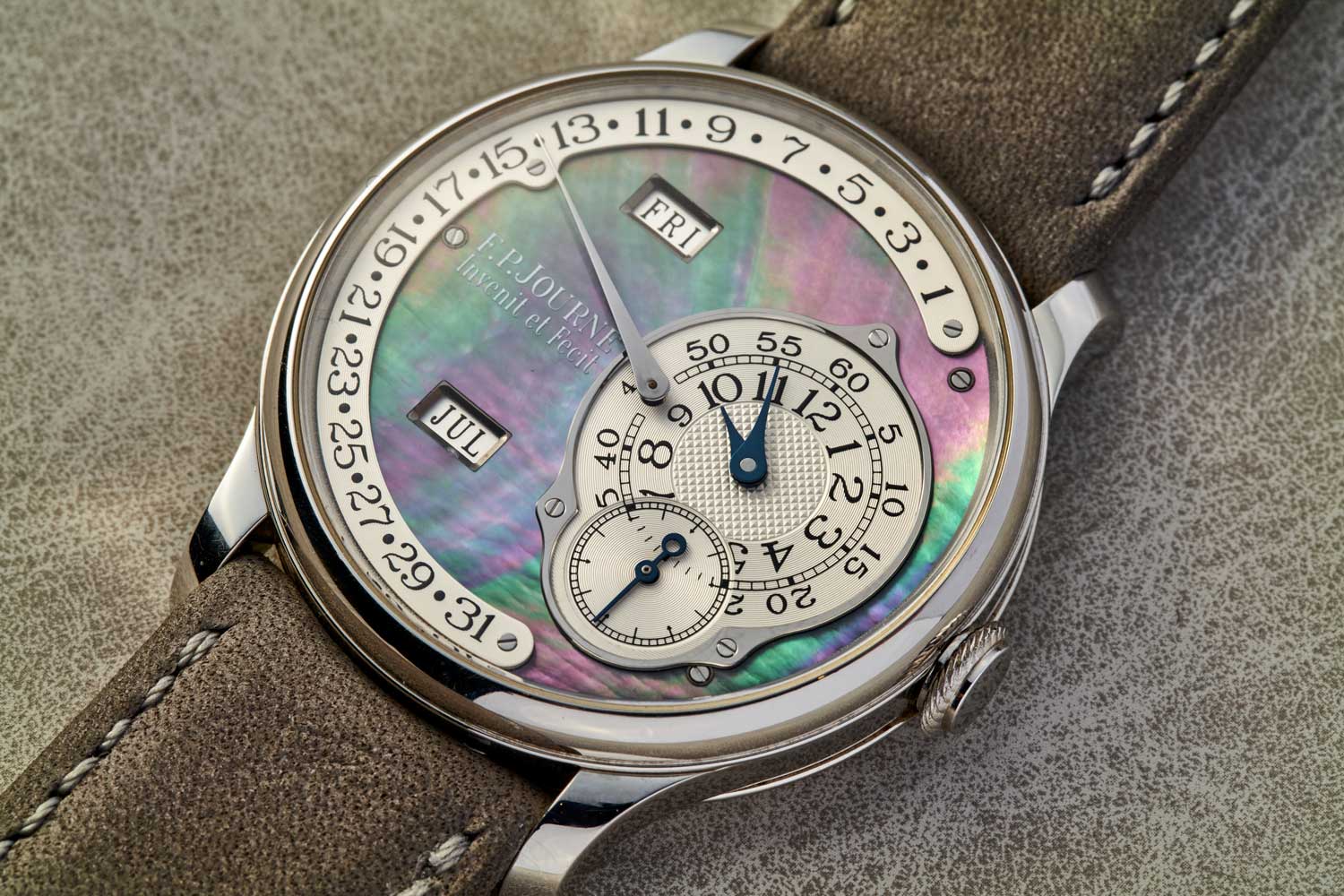
Also available in the sale is a stunning platinum Octa Calendrier with a black mother-of-pearl dial made for Sincere Fine Watches in a limited edition of 15 pieces in 2006.
This feeding frenzy for Journe’s watches is not lost on the great watchmaker, though at the same time, he is nonplussed by it. He explains, “I recognize that today when you are allocated one of my watches, I am giving you the equivalent of a car in terms of what the secondary value margin might be. But I will still only allocate my watches to the same type of individual that has always supported me from the beginning, that is someone whose passion is so genuine that in the past he would have been happy losing 30 percent of the watch’s value rather than today where he gains 50 percent or more.” As far as the secondary value for his timepieces is concerned, you can see that Journe is cognizant of the appreciation but is seemingly unconcerned. That’s because as his friend Pierre Jacques, the CEO of De Bethune, points out, “François-Paul is an extraordinary man in that he is not at all motivated by money. He lives in a simple apartment in Geneva. He walks to his office every day to work at a normal desk. He comes home every day at noon to cook lunch for his mother. His love for horology is so inspiring, because it is purely about the pursuit of watchmaking perfection.”
Lest we forget, Journe has also been actively supporting young talent in their journey. Since 2015, he has organized the annual Young Talent Competition in partnership with The Hour Glass to seek out the next generation of watchmakers, where the winner is awarded with a diploma and a CHF 20,000 grant to purchase watchmaking tools.
Parting Thoughts
François-Paul Journe once said to me, “If someone composes music, then he cannot ignore Mozart. He can’t ignore Beethoven. He can’t ignore the history of music. He continues in the tradition defined by those that came before him. But every once in a while, there will be a rare genius like Stravinsky that arrives and changes everything. But this doesn’t happen often. In watchmaking, we haven’t witnessed the birth of a Stravinsky for 200 years. The last one was Abraham-Louis Breguet.”
Yet, despite what Journe has said, what is clear to me, and to the most discerning collectors and journalists the world over, is that our era of contemporary horology has been defined by our own Stravinsky — a genius watchmaker, a man of profound brilliance and, though he often tries to hide it, of immeasurable compassion. And that is François-Paul Journe himself.
When I ask François-Paul to reflect on his achievements, he says with humility, “Watchmaking is like a long wall. What I have done is brought one or two stones to the wall, which is already not bad as there are many others who have never done even that.” But the truth is that it is not two stones that he has added, but an entire parapet, the foundation of which will serve to uplift an entire new generation of watchmakers. Because François-Paul Journe’s greatest achievement has been to ensure the long-term relevance and viability of true watchmaking for the foreseeable future. And so, you will understand that each of the watches offered in this sale initiated by the dynamic Remi Guillemin and Christie’s is not simply a timepiece but, to me, a part of the legacy of the greatest watchmaker of our time.
Christie’s live auction, the Art of F.P. Journe, takes place at 1:00 PM CEST on the 12th of May in Geneva.










